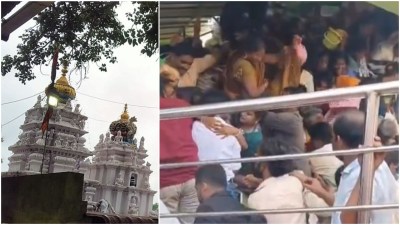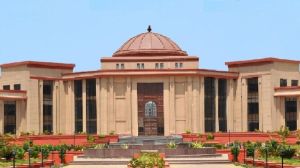Average Bihari ko gussa kyon aata hai
The assembly election in Bihar has been convulsed by several high-profile criminal incidents. In fact, over the years Bihar has acquired the...

The assembly election in Bihar has been convulsed by several high-profile criminal incidents. In fact, over the years Bihar has acquired the dubious distinction of being the most lawless state of the country. Possibly the state should be categorised as the copybook example of a ‘rogue’ province. Thus, it is imperative for the national civil society to reverse the trend of growing criminalisation leading to the ‘mass destruction of civilised society’ (MDCS) in Bihar, bringing the state back to the national mainstream.
Even though crime rates in Bihar are nearly the same as national crime rates, why is it being singled out as a possible rogue state? One of the factors could be the close proximity of crime with politics. Bihar’s image is bad because this nexus exists here in a very crude manner. When adult franchise was introduced in India after the first general election, electoral mobilisation was not difficult for the then most powerful Congress because it had huge political legitimacy and a massive party machine to back up. Even then, it could not get majority of the popular vote, with the lone exception of the 1984 parliamentary election, immediately after the assassination of Indira Gandhi.
With its electoral marginalisation increasing, the Congress resorted to various improvisations, either to continue in its own political space or to thwart the possible emergence of others. When Communists threatened to take over Bombay, the financial capital of the country, in the Fifties, the Shiv Sena was promoted to break their stranglehold. Bhindranwale was also the Congress’s political counterfoil against the Akalis in Punjab. Both these experiments did benefit the Congress in the short run, but ultimately proved to be a disaster, the ‘political monster’ created by it trying to gobble its own creator. Later on, they changed the strategy. In a place like Bihar, instead of promoting dubious political or religious formations, they started co-opting petty criminals for managing booths, to increase their vote share. This started way back in the Fifties, in then Begusarai sub-division of the Monghyr district.
Here again the CPI was the compulsion, because one of its party members got elected to the Bihar assembly for the first time in a by-election in 1956. After the Green Revolution and Communist and socialist upsurge since the 1967 general election, petty criminals started capturing polling booths with military precision and style. Increasingly, these crime machines got integrated with the party structure. Thus, when one smuggler known for mega booth-capturing was killed by the police, his body was draped in the Congress flag and his funeral was attended by all important leaders of the party. Criminals brought in the party fold soon stopped playing second fiddle. Later, with Indira Gandhi’s short shrift to Congress organisations, when Syndicate leaders were thrown out, and JP’s advocacy for party-less democracy and ideology-free politics, more ground was created for entry of organised crime into the party structure. One of the immediate fallouts of the JP movement was liquidation of the Socialist Party. With its liquidation, the competitive effort of other political parties to build party structures got eroded.
This was not the case with the political parties operating in southern and western states and Bengal in the east. The political parties there acted as a conduit between the state and society. Political parties were socially embedded and could resort to political bargaining with key social constituencies.
In Bihar, the collapse of the party structure resulted in criminals without any record of political work aspiring for party tickets. In the absence of party structure which could convert social support into tangible electoral support, criminal networks got co-opted in the party. This phenomenon is most visible in the Hindi heartland states of Bihar and UP. Contrary to general impression, the ‘dons’ of the criminal syndicate do not operate through strong-arm methods only. In the backdrop of ideology-free politics, public finance crisis and the increasing collapse of the state structure, they often act as various types of providers. In the process, they derive societal legitimacy.
But after the post-Mandal social empowerment, the Dons have also been divided on the basis of social and caste hierarchy. Dons of the lowest social strata have either been integrated into the party structure or diversified themselves into other lucrative but legitimate economic activities. But the dons from the traditionally elite social strata who were politically marginalised got involved with a spate of high-profile mega criminal activities (including kidnapping) to exercise their informal authority.
In a way, the history of the Chambal region of Madhya Pradesh is testimony to the fact of traditional elites getting into mega dacoity and kidnapping to exercise their informal authority after princely estates and zamindaris were abolished there. Later on, they effortlessly got integrated into the electoral structure. In Bihar, criminal activities to exercise informal power by the traditional elites are being attempted almost 50 years after Independence, after subaltern empowerment has politically marginalised them.
(To be concluded)
The writer is Member Secretary, Asian Development Research Institute (ADRI), Patna
PART II



- 01
- 02
- 03
- 04
- 05




























